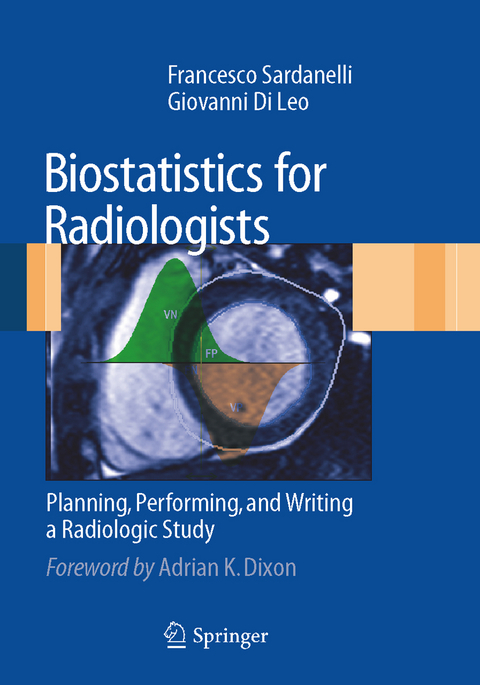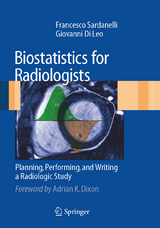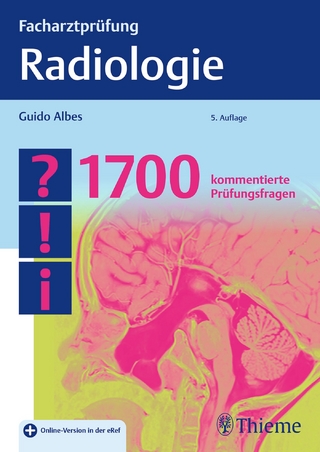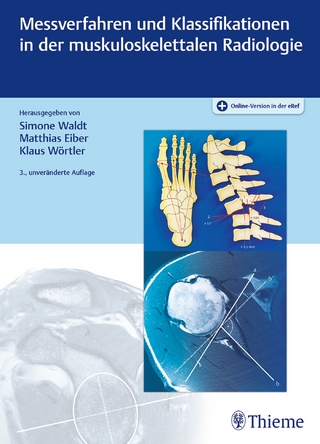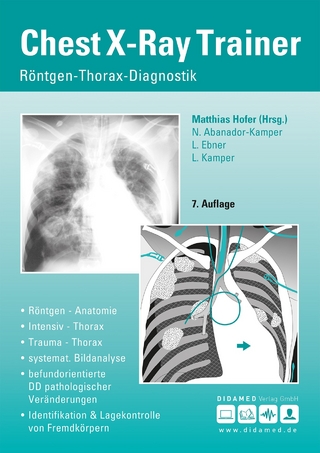Biostatistics for Radiologists
The aim of this book is to present statistical problems and methods in a friendly way to radiologists, emphasizing statistical issues and methods most frequently used in radiological studies (e.g., nonparametric tests, analysis of intra- and interobserver reproducibility, comparison of sensitivity and specificity among different imaging modality, difference between clinical and screening application of diagnostic tests, ect.). The tests will be presented starting from a radiological "problem" and all examples of statistical methods applications will be "radiological".
Introduction.-1 Diagnostic Performance.- 1.1. The Results of an Examination Compared to a Reference Standard.- 1.2 Measures of Diagnostic Performance.- 1.3 Sensitivity, Specificity, FN Rate and FP Rate.- 1.4 Predictive Values, Diagnostic Accuracy, and Disease Prevalence.- 1.5 Bayes’ Theorem, Likelihood Ratios, and Graphs of Conditional Probability.- 1.6 Cutoff and ROC Curves.- 2 Variables and Measurement Scales, Normal Distribution, and Confidence Intervals.- 2.1 Variables and Measurement Scales.- 2.2 Gaussian Distribution.- 2.3 Basics of Descriptive Statistics.- 2.4 Standard Error of the Mean.- 2.5 Standard Error of the Difference between two Sample Means.- 2.6 Confidence Intervals.- 2.7 Confidence Interval of a Proportion.- 3 Null Hypothesis, Statistical Significance and Power.- 3.1 Null hypothesis and Principle of Falsification.- 3.2 Cutoff for Significance, Type I or a Error and Type II or ß Error.- 3.3 Statistical Power.- 3.4 Why 0.05?.- 3.5 How to Read a p Value.- 4 Parametric Statistics.- 4.1 The Foundations of Parametric Statistics.- 4.2 Comparison Between Two Sample Means: Student’s t Test.- 4.2.1 The Link with Confidence Intervals.- 4.3 Comparing Three or More Sample Means:the Analysis of Variance.- 4.4 Parametric Statistics in Radiology .-5 Non-Parametric Statistics.- 5.1 One Sample with Two paired Measurements.- 5.2. Two Independent Samples.- 5.3 Three or More (k) Dependent Samples.- 5.4 Three or More (k) Independent Samples.- 5.5 Some Considerations Regarding Non-Parametric Tests.- 6 Linear Correlation and Regression.- 6.1 Association and Causation.- 6.2 Correlation between Continuous Variables.- 6.3 Interpreting the Correlation Coefficient.- 6.4 Test for Significance.- 6.5 Rank Correlation.- 6.6 Linear Regression.- 6.7 Interpreting the Regression Line.- 6.8 Limitations of the Use of the Regression Line.- 7 Reproducibility: Intraobserver andInterobserver Variability.- 7.1 Sources of Variability.- 7.2 Why Do We Need to Know the Variability of Measurements?.- 7.3 Intraobserver and Interobserver Variability for Continuous Variables: the Bland-Altman Analysis.- 7.4 Interpreting the Results of the Bland-Altman Analysis.- 7.5 Intra- and Interobserver Variability for Categorical Variables: the Cohen k.- 8 Study Design, Systematic Reviews, and Levels of Evidence.- 8.1 Phases 1, 2, 3, and 4 of Pharmacologic Research.- 8.2 Study Classification.- 8.3 Experimental Studies and Control Group.- 8.4 Observational Studies.- 8.5 Randomized Controlled Studies: Alternative Approaches.- 8.6 Studies on Diagnostic Performance: Classification.- 8.7 Randomization and Minimization.- 8.8 Sample Size.- 8.9 Systematic Reviews (Meta-analyses).- 8.10 Levels of Evidence.- 9 Bias in Studies on Diagnostic Performance.- 9.1 Classification.- 9.2 Bias Affecting External Validity.- 9.3 Bias Affecting Internal Validity.- 9.4 A Lot of Work to Be Done.- 10 How to Write a Radiologic Paper.- 10.1 Major Papers, Minor Papers, Invited Papers.- 10.2 Which Medical Journal?.- 10.3 Do We Always Need Institutional Review Board Approval and Informed Consent?.- 10.4 Title, Running Title and Title Page.- 10.5 Four-section Scheme, Section Size and Editing Sequence.- 10.6 «Introduction»: Why Did You Do It?- 10.7. «Materials and Methods»: What Did You Do and How Did You Do It?- 10.8 «Results»: What Did You Find?- 10.9 «Discussion»: What Is the Meaning of Your Findings?- 10.10 «References».- 10.11 «Abstract» and «Keywords».- 10.12 Shared Rules.- 10.13 Other Recommendations.- 10.14 Dealing with the Editor’s Response and the Reviewers’ Opinions.- 10.15 To Conclude.- Analytical and noun index.
| Zusatzinfo | XXII, 231 p. |
|---|---|
| Verlagsort | Milan |
| Sprache | englisch |
| Maße | 178 x 254 mm |
| Themenwelt | Mathematik / Informatik ► Mathematik |
| Medizinische Fachgebiete ► Radiologie / Bildgebende Verfahren ► Radiologie | |
| Studium ► Querschnittsbereiche ► Epidemiologie / Med. Biometrie | |
| Schlagworte | Biostatistik • Radiologie |
| ISBN-10 | 88-470-1132-9 / 8847011329 |
| ISBN-13 | 978-88-470-1132-8 / 9788847011328 |
| Zustand | Neuware |
| Haben Sie eine Frage zum Produkt? |
aus dem Bereich
